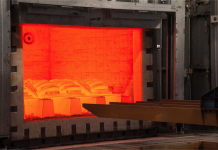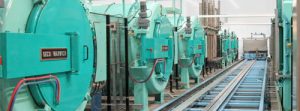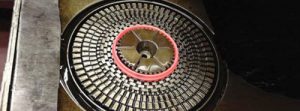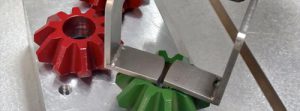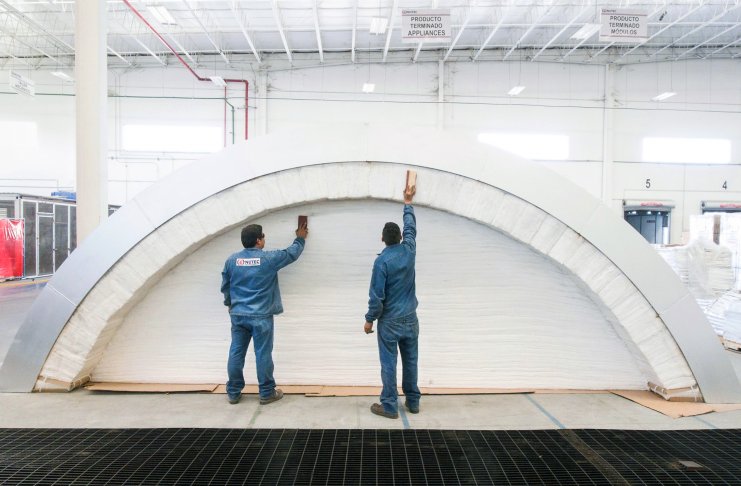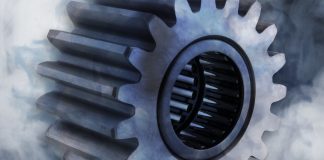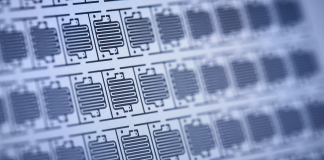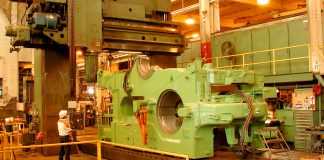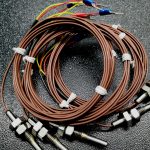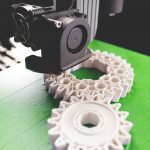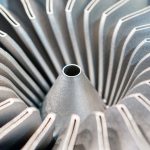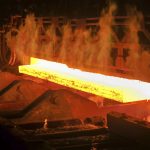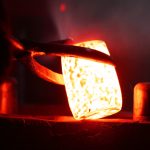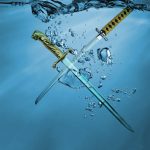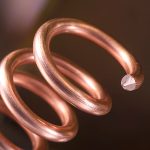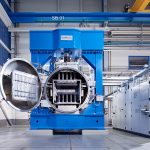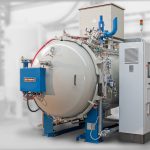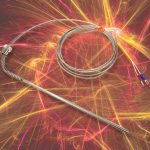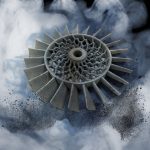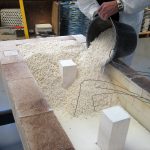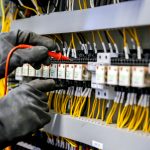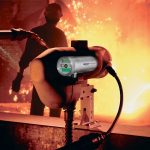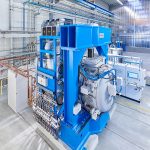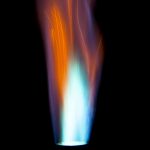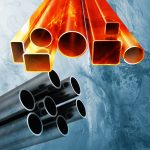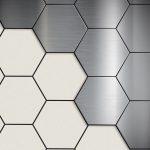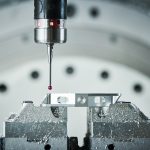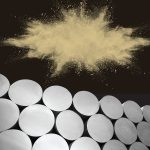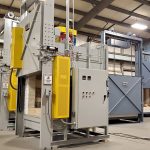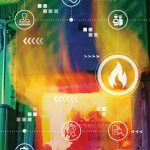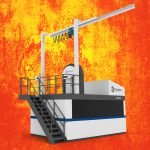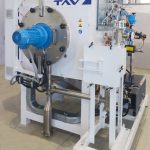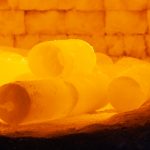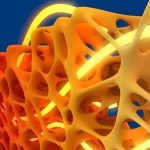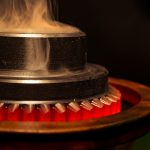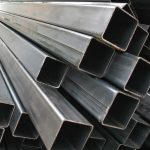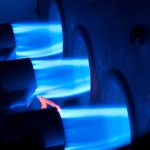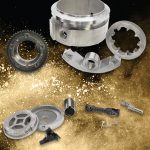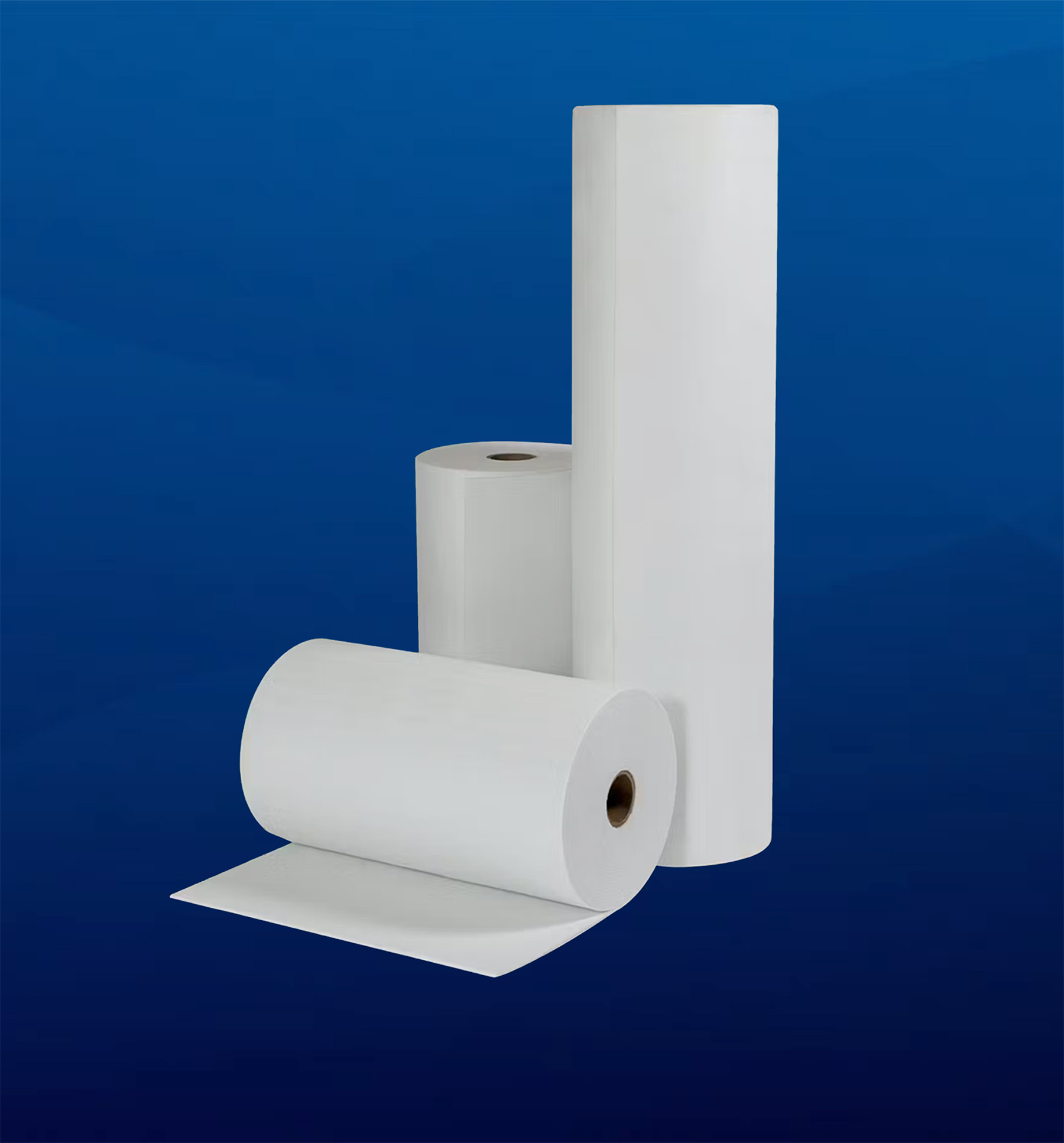4D Quench: Taking aerospace to new heights
When providing heat treatment for aerospace gears and bearing components, manufacturers are traditionally left with three choices for thermal processing: continuous flow atmospheric furnaces...
What ISO 17025 certification means for the heat-treating industry
ISO 17025 standards within the heat-treating industry are important when it comes to methods of calibration.
This is especially important at BASF, a company whose...
Industrial ion nitriding of TMS 80 micro alloyed steel parts at various plasma power...
Control of the ion nitriding process is typically based on temperature of the work piece, composition of the gas mixture, gas pressure, nitriding time,...
Additive manufacturing and its road to industrial maturity
The American Gear Manufacturers Association’s (AGMA) Emerging Technologies Committee (ETC) recently organized a show floor tour of the Rapid + TCT Exhibition (Rapid). The...
Additive manufacturing: New frontiers for production and validation
Over the last few decades, additive manufacturing (AM)/3D printing has fundamentally changed the way that manufacturers approach product development. Industry is now almost universally...
Choosing between HFC and HFDu hydraulic fluids
While both HFC and HFDu hydraulic fluids reduce fire risk, improve operation safety, and enhance environmental performance, significant differences exist. Standing at 50 to...
Carbo-nitriding of forging dies
Forging dies have to resist high mechanical and thermal loads. Therefore, they are usually nitrided. Former investigations showed that the abrasive wear at the...
Quenching: A long and varied history
There have been many myths concerning the quenchants used by ancient blacksmiths in the heat treatment of swords and knives. Various liquids have been...
Preventing oxidation in the manufacturing of copper-titanium alloys
Due to their resistant and highly conductive properties, copper-titanium alloys become increasingly important in the field of industrially manufactured electrical components such as connectors,...
Diffusion bonded printed circuit heat exchangers for severe environments
Traditional plate or shell and tube heat exchangers have long been used in processing industries. Today, however, with many new applications involving high pressures,...
Microstructure and tensile properties of Al PM prepared by novel low-pressure sintering
This article proposes a novel low-pressure sintering process contraposing to characteristics of pre-alloyed aluminum powders and analyzes its feasibility. The low pressure was set...
Case study: Partnering with the medical industry
The high-tech medical industry is one of the most demanding in terms of standards, procedures, and technical parameters that must be met by the...
The tribology of dental ceramics
Ceramics are widely used in dentistry due to their ability to mimic the optical characteristics of enamel and dentine, as well as their biocompatibility...
Enhanced thermal sensitivity in a single metal thermocouple
Single metal thermocouples (SMTs) have recently been developed with a new design concept of width-engineering of metal segments. In such designs, two segments of...
Gas solutions for sustainable metal AM
Sustainability is a key value driver and focus for industrial manufacturing, and additive manufacturing fulfills that need in more ways than one.
Additive manufacturing,...
Carbon-neutral insulation for high-temperature applications
In January 2022, Mantec Technical Ceramics, based in Stoke-on-Trent, U.K., launched carbon neutral versions of its super-insulative Ultralite material, and this has been met...
Sophisticated control systems for optimal process operations
A comprehensive control system, whether designing a new controls package or updating your existing system to a new controls scheme, is the most effective...
What pyrometer users need to know
Radiation thermometry, also known as infrared pyrometry, optical pyrometry, or simply pyrometry, is a non-contact temperature measurement technique that requires measurement of some portion...
The science of diffusion bonding or joining together dissimilar metals
Metal diffusion bonding is an essential joining method for achieving a high-purity interface when two similar metals require superior structural integrity. The process involves...
Heat-transfer fluids: Growing in visibility and importance
The growing use of electronics in many applications is leading researchers to better understand the reasons for using heat-transfer fluids. Electronics generate substantial amounts...
Combustion optimization in gas burners of reverberatory Furnaces during nickel-alloy melting
In recent years, due to climate change, environmental sustainability programs have been created that require the search for alternatives to reduce air emissions and...
Effect of heat and cryogenic treatment on wear and toughness of HSS AISI M2
Despite the promising results obtained with cryogenic treatment of tool steels, there are still contradictions regarding its benefits, and there is no consensus regarding...
The impact of complete lubricant removal on the mechanical properties and production of PM...
The greatest hurdle in the production of powder metal components is lubricant removal. Over the years, equipment and processes have been developed to aid...
Vacuum heat treating and aluminum alloys
This study investigated the interface morphology, microstructure composition, and connection strength of 7A52 aluminum alloy-Al2O3 ceramic brazed joints under heat-treatment conditions. Alumina ceramics were...
Heat treatment of gears
Often the options of heat treat may feel pre-defined when looked at from a gear designer’s perspective. There are options, but both gear designers...
An interpretable machine learning based approach for process to areal surface metrology informatics
Surface metrology parameters represent an important class of design variables, which can be controlled because they represent the DNA or fingerprint of the whole...
Women in manufacturing: Diversifying the industry
You don’t have to go very far back in time to find a point where the role of women in the manufacturing sector was...
Using FAST-forge to produce near net shape forgings from surplus AM powder
Titanium alloys are used extensively in the aerospace sector due to the good combination of high strength-to-weight ratio and corrosive resistance. Many aerospace components...
The importance of preventative maintenance
For those of you who work in heat treat every day, this will be nothing new; however, it will be an attempt to assist...
AC7102 Checklist Review, Part 5
Editor’s note » This is the final article of a five-part series that deconstructs the requirements of AC7102. Each article has appeared every other month...
The next level of hot isostatic pressing
Over recent years, the development of in-HIP heat treatment (High Pressure Heat Treatment) has led to some interesting developments, which are now changing the...
Use of plasma nitriding to improve the wear and corrosion resistance of 18Ni‑300 maraging...
Selective laser melting (SLM) is one of the most promising additive-manufacturing (AM) technologies . It is a powder-bed fusion process, where a high-power laser...
How to properly debind parts produced by metal AM
Additive manufacturing is a manufacturing technology that is gaining more and more ground among metallurgists. The process involves all the techniques used to create...
Titanium alloy microstructure fingerprint plots from in-process machining
Titanium alloy components require several machining stages of forged billets, which are supplied in a range of annealing conditions. Generally, the machining performance is...
Enabling a better custom ceramic fabrication
Ceramic structures filled with tiny macroscopic pores play an important role in industrial and biomedical products, but they’re also notoriously difficult to fabricate.
A Cornell...
AC7102 Checklist Review, Part 4
Editor’s note » This is the fourth of a five-part series of articles that will deconstruct the requirements of AC7102. Each article will appear every...
The subtleties of induction processing
Inductoheat was recently asked to conduct three technical video seminars on modern induction thermal technologies for automotive industry:
• The first seminar was April...
Improving the mechanical properties of medium carbon steel
Quenching is one of the major processes of heat treatment of medium carbon steel that aims at improving its mechanical properties. However, the effectiveness...
Carburizing clean with Method 4
The existing model for removing soot from a furnace is a burn-out consisting of three methods:
Method 1: Remove the load, lower the furnace temp,...
Focusing on advanced PM manufacturing methods
“Times and conditions change so rapidly that we must keep our aim constantly focused on the future.” — Walt Disney
How appropriate. Over the years,...


